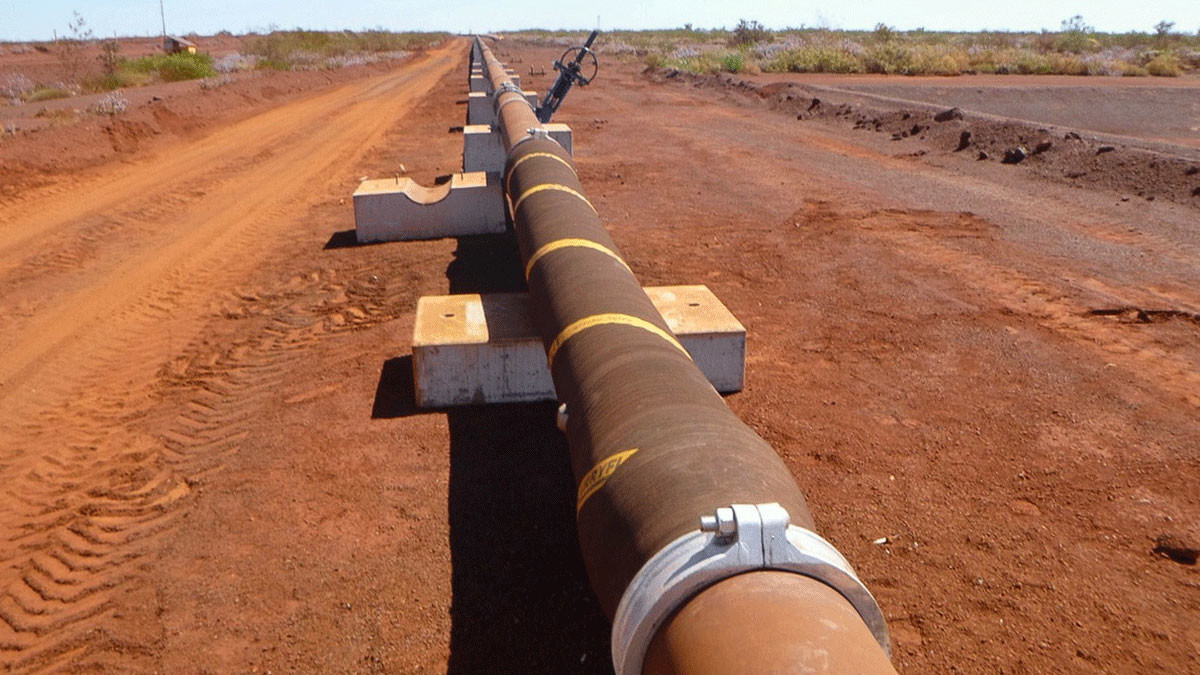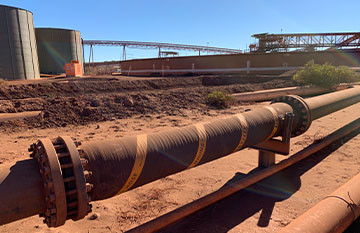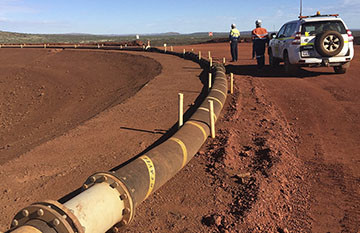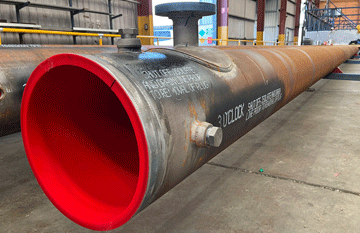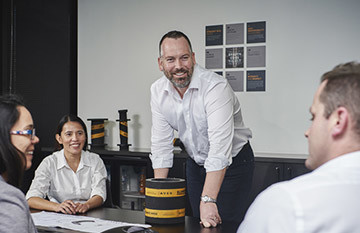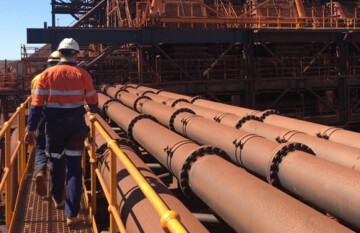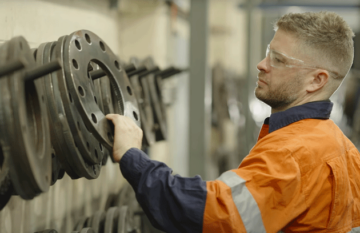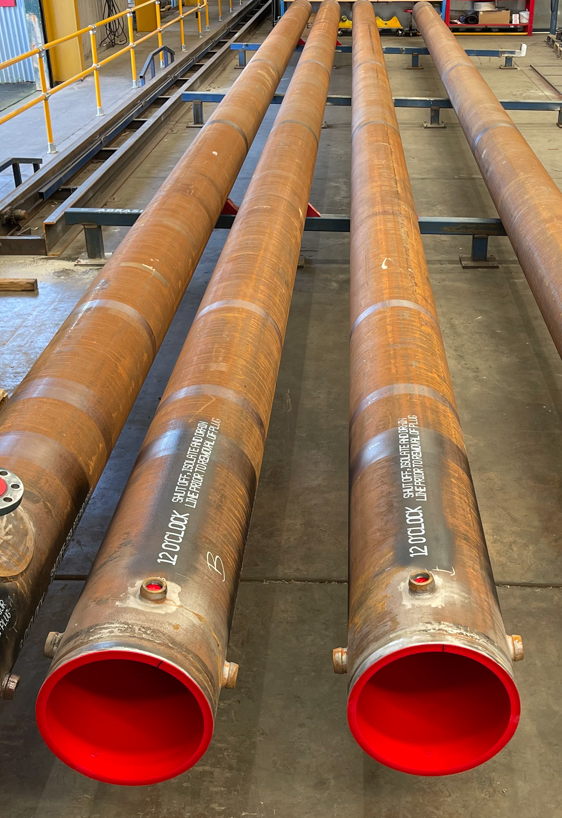
Working with design engineer Calibre, we helped them choose the right slurry piping and hoses for the application.
They faced 4 key engineering challenges while designing this project:
Challenge #1: Efficiency and cost
The design originally called for standard 12m pipe lengths. But after working through the specification with Calibre’s engineers, we recommended they use 18m lengths instead.
Longer lengths mean fewer joins between pipework and less couplings. Less transport is needed, less crane lifts, and faster installation—reducing total install costs.
This new design meant that over 13km of tailings pipelines, they used 30% less pipe spools.
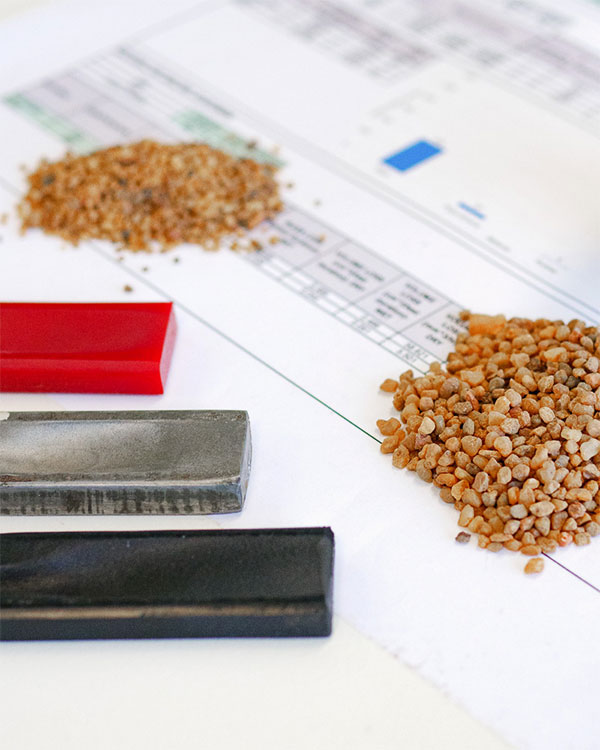
Challenge #2: Abrasive iron ore slurry
The tailings and waste fines iron ore slurry at RVS is some of the coarsest in Australia. With this challenge in mind, the pipeline needed the best wear technology.
In 2016, Rio Tinto conducted thorough field testing. They sourced five different lined steel spools: polyurethane polymer, HDPE, rubber, ceramic, and UHMWPE. They bore matched the spools, then bolted them to the transfer line—and let it run for four years.
When they removed the spools and thickness tested each one, the results were clear—Abrasiguard polymer-lined pipe was the best option for this specific slurry.
It has a high-performance polymer liner that’s chemically bonded to the pipe to combat erosion and corrosion. And it can stand up to the rigors of coarse, wet sliding abrasion over a 15-20 year lifespan.
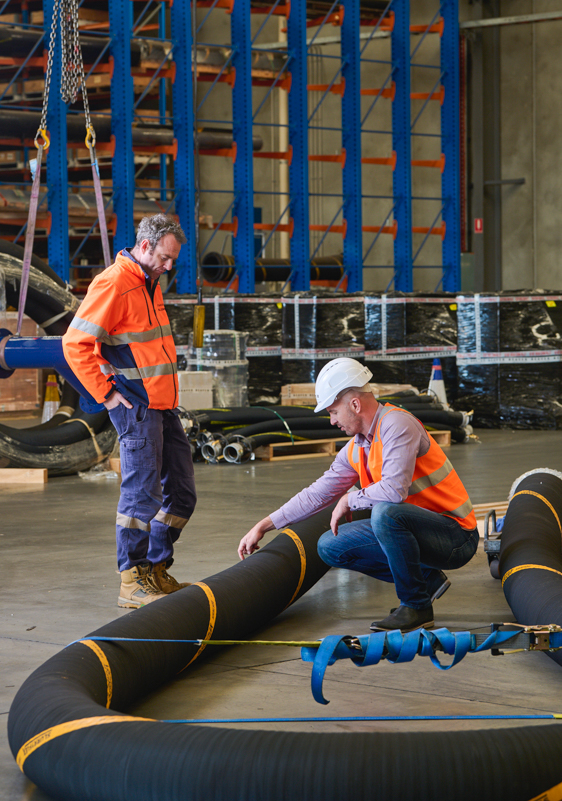
Challenge #3: Pipeline pressure and elevation changes
The Pilbara terrain is rocky and undulating. So, they needed a way to transport the slurry under high pressure that was flexible enough to allow for elevation changes along the pipeline route.
As it only carried smaller-particle iron ore fines, the line had to handle pressures of up to 5000kPa.
They specified Slurryflex High-Pressure SA-Series Hard-Wall mining hose, a high-pressure hose with a rubber inner wear liner for abrasion resistance. Its wire helix reinforcement withstands internal and external pressure, while an outer cover protects from the extreme Pilbara weather.
An essential part of the system design was to match the bore on connections where Slurryflex joined to Abrasiguard. A bore-matched system eliminates leading edge wear at the pipe joins. Leading edge wear would have caused turbulence and localised wear on the liner downstream.
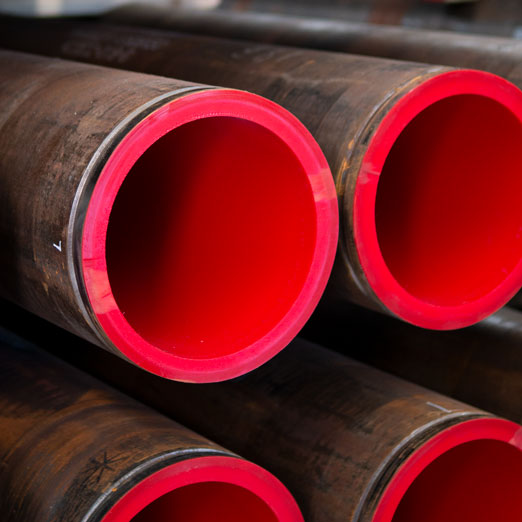
Challenge #4: Reduce installation time
The RVS team wanted their new slurry pipeline to be easy to install and maintain.
Rio Tinto’s spec called for Victaulic roll grooved ends for this specific project. This helped make installation a breeze, saving both time and labour costs.
It’s faster to install, requires fewer bolts, and has no torque requirements. And a grooved pipe coupling holds the gasket in steady compression which ensures a good seal.
Success for RVS
The RVS overland slurry pipelines were a success because of Calibre’s thorough design work in the early stages.
This enabled Rio Tinto to improve and optimise production capacity and quality in the Robe Valley.
We were pleased to partner with Calibre and Rio Tinto on this project and to provide specialist advice in slurry piping selection and design.








